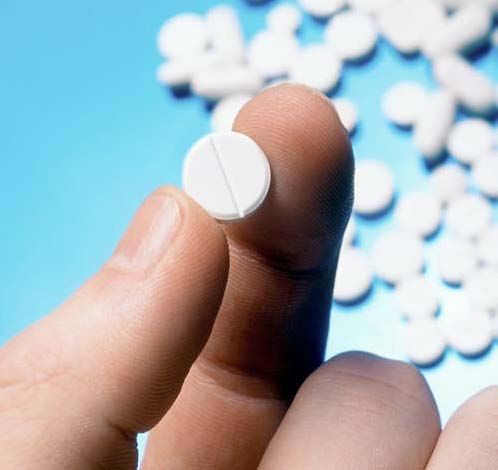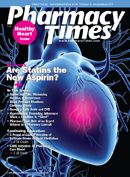Publication
Article
Pharmacy Times
Stroke and TIAs- Minimizing the Risk of Recurrence
Author(s):
Pharmacists can help reduce the number of recurrent strokes by counseling patients on the importance of adhering to their medication regimens and educating them about modifiable risk factors.
Dr. Dixon is an ambulatory care clinical pharmacist at Wake Forest University Baptist Medical Center, Winston-Salem, North Carolina, as well as a clinical assistant professor of pharmacy practice at Wingate University School of Pharmacy.
Stroke is the leading cause of adult disability and the third leading cause of death in the United States.1 Approximately 200,000 individuals experience a recurrent stroke each year even though a majority of strokes are preventable. 1 In addition, considerably more individuals experience a transient ischemic attack (TIA), greatly increasing the risk of stroke.2
The classic definition of stroke is the continuation of neurologic symptoms lasting more than 24 hours. TIA has previously been defined as a focal neurologic deficit lasting less than 24 hours; however, it was recently redefined as a focal neurologic deficit with clinical symptoms lasting less than 1 hour and without infarction.3 Despite differences in their clinical definition, prevention modalities for stroke and TIA are quite similar.
Once a patient has experienced a stroke or TIA, secondary prevention becomes a major focus. The risk of recurrent stroke is estimated to be 3% to 10% within the first 30 days and increases to 25% to 40% 5 years after the initial stroke.4 Equally important is the approximate 10% risk of stroke within 90 days after a TIA, which is significantly greater within the first week.2 Appropriate antithrombotic therapy and controlling modifiable risk factors, such as hypertension, diabetes, hyperlipidemia, and continued smoking, are the mainstay of prevention.
Recurrent stroke prevention guidelines were recently updated to reflect significant findings from clinical trials regarding appropriate use of antiplatelets and the efficacy of statin therapy in prevention of recurrent strokes.

Aspirin Alone or Aspirin Plus Clopidogrel?
Antiplatelet agents have long been preferred over oral anticoagulation to reduce the recurrent risk of stroke in patients with noncardioembolic ischemic stroke or TIA due to the increased risk of bleeding and the cost of monitoring. Previous recommendations suggested aspirin (50-325 mg/ day) monotherapy or aspirin combined with extended-release dipyridamole or clopidogrel were acceptable options in these patients (Class I, Evidence A).2 It was unclear if there was a difference between specific antiplatelet agents until recent data became available.
The Clopidogrel and Aspirin Versus Aspirin Alone for the Prevention of Atherothrombotic Events (CHARISMA) trial5 compared clopidogrel and aspirin with aspirin alone in the prevention of recurrent nonfatal ischemic stroke. The double-blind study randomized 15,603 patients to clopidogrel 75 mg plus aspirin (75-162 mg) or placebo plus aspirin (75-162 mg). No difference was found in the rates of nonfatal ischemic stroke between the 2 groups (1.7% vs 2.1%, P = .07). The rate of nonfatal stroke, however, was slightly higher in the placebo plus aspirin group (2.4% vs 1.9%, P = .03). No difference was found regarding risk of major or fatal bleeding, but there was a higher rate of moderate bleeding in patients on clopidogrel plus aspirin.
The CHARISMA study did not support the use of aspirin plus clopidogrel. Consequently, aspirin plus clopidogrel is now not considered an option unless patients have had a recent coronary event and/or stent placement. Only aspirin monotherapy, aspirin plus extended-release dipyridamole, and clopidogrel monotherapy are recommended for patients with noncardioembolic ischemic stroke or TIA.6
Aspirin Alone or Aspirin Plus Dipyridamole?
The combination of aspirin and dipyridamole was previously recommended over aspirin alone; however, this recommendation was based on limited data. The European/Australian Stroke Prevention in Reversible Ischemia Trial (ESPRIT)7 sought to provide further evidence to support the use of aspirin and dipyridamole over aspirin alone.
ESPRIT was an open-label study that randomized 2763 patients to receive aspirin 30 to 325 mg with or without dipyridamole 200 mg twice daily for an average of 3.5 years. The primary outcomes included vascular-related death, nonfatal stroke, nonfatal myocardial infarction, and major bleeding complications. The on-protocol analysis showed no difference between the groups, whereas the intention-to-treat analysis demonstrated a benefit in favor of the combination group (hazard ratio, 0.80; 95% confidence interval, 0.66-0.98). Although the ESPRIT trial was limited by its open-label design and disparities between on-treatment and intention-totreat analyses, a meta-analysis7 including the ESPRIT trial concluded aspirin plus dipyridamole was better than aspirin alone. As a result, the previous recommendation was upgraded from Class II, Evidence A to Class I, Evidence B in the updated guidelines.6
The selection of antiplatelet agents should be based on potential risk for adverse effects, costs, and comorbid illnesses. Further data from ongoing trials are needed to determine the optimal antiplatelet of choice in these patients for secondary prevention.
Lipid Management Update
The use of statin therapy for recurrent stroke prevention has been controversial. Previous recommendations suggested clinicians follow the National Cholesterol Education Program guidelines in patients with ischemic stroke or TIA who also had a history of coronary artery disease, elevated cholesterol levels, or evidence of an atherosclerotic origin. In patients with ischemic stroke or TIA without comorbidities warranting statin therapy, it was considered only a “reasonable option” to place these patients on statin therapy due to limited data to support such a recommendation (Class IIa, Evidence B).2
The Stroke Prevention by Aggressive Reduction in Cholesterol Levels (SPARCL) trial8 shed new light on the issue of statin therapy in patients with ischemic stroke or TIA who do not have a history of coronary heart disease (CHD). The randomized, double-blind study compared atorvastatin 80 mg daily to placebo with a primary end point of fatal or nonfatal stroke. Low-density lipoprotein cholesterol (LDL-C) was reduced from a mean of 132.7 mg/dL at baseline to 73 mg/dL at study end in the atorvastatin group, whereas LDL-C was virtually unchanged in the placebo group (133.7 vs 129 mg/dL). After a mean follow-up of 4.9 years, patients receiving atorvastatin were 16% less likely to have a recurrent fatal or nonfatal stroke. Additionally, there was a significant reduction in CHD events despite the study population having no history of CHD.
Based on the data from the SPARCL trial, statin therapy is now recommended with Class I, Evidence B patients with ischemic stroke or TIA without a CHD history.6 The benefits seen in the SPARCL trial are likely a class effect due to a lack of opposing evidence.
Recognizing Stroke Symptoms
Patients and clinicians should be familiar with the symptoms of a stroke so that medical care can be provided in a fast and effective manner (Table). Common symptoms of stroke include numbness or weakness, confusion, trouble speaking, blurred vision, loss of balance and coordination, and severe headache.

Pharmacist’s Role
Pharmacists can contribute in many ways to help reduce the number of recurrent strokes. Educating patients about the risk of recurrence and discussing ways they can reduce their risk is essential. Patients are often concerned about antiplatelet agents due to the potential for bleeding and may discontinue these agents. In particular, chronic headache is a common side effect of dipyridamole, causing patients to discontinue this potentially life-saving medication. Pharmacists can assist by discussing this with patients upfront and recommending upward tapering to minimize the severity of the headaches. It also is common for patients to experience gastrointestinal upset with aspirin therapy, and pharmacists can recommend patients take their aspirin with food or suggest they talk to their physician about changing to clopidogrel, which is a reasonable alternative.
Patients should be educated about modifiable risk factors to help minimize their risk of recurrent stroke. Monitoring a patient’s blood pressure, offering smoking cessation counseling, as well as counseling on weight loss and exercise would prove beneficial in reducing the risk of stroke and improving a patient’s overall health. â–
References
1.
National Stroke Association Web site. www.stroke.org/site/DocServer/STROKE_101_Fact_Sheet.pdf?docID=4541. Accessed July 2008.
2.
Saco
RL, Adams RJ, Albers G, et al. Guidelines for prevention of stroke in patients with ischemic stroke or transient ischemic attack. Stroke. 2006;37(2):577-617.
3.
Albers GW, Caplan LR, Easton JD, et al. Transient ischemic attack: proposal for a new definition. N Engl J Med. 2002;347(21):1713—1716.
4.
National Stroke Association Web site. www.stroke.org/site/DocServer/Recurrent.pdf?docID=961. Accessed July 2008.
5.
Bhatt DL, Fox KA, Hacke W, et al. Clopidogrel and aspirin versus aspirin alone for the prevention of atherothrombotic events. N Engl J Med. 2006;354:1706-1717.
6.
Adams
RJ, Albers G, Alberts MJ, et al. Update to the AHA/ASA recommendations for the prevention of stroke in patients with stroke and transient ischemic attack. Stroke. 2008;39(5):1647-1652.
7.
ESPIRIT Study Group, Halkes PH, van Gijn J,
Kappelle LJ
,
Koudstaal PJ
,
Algra A
. Aspirin plus dipyridamole versus aspirin alone after cerebral ischaemia of arterial origin (ESPIRIT): randomized controlled trial. Lancet. 2006;367(9523):1665-1673.
8.
Amarenco P, Bogousslavsky J, Callahan A 3rd, et al. High-dose atorvastatin after stroke or transient ischemic attack. N Engl J Med. 2006;355(6):549-559.
Newsletter
Stay informed on drug updates, treatment guidelines, and pharmacy practice trends—subscribe to Pharmacy Times for weekly clinical insights.







